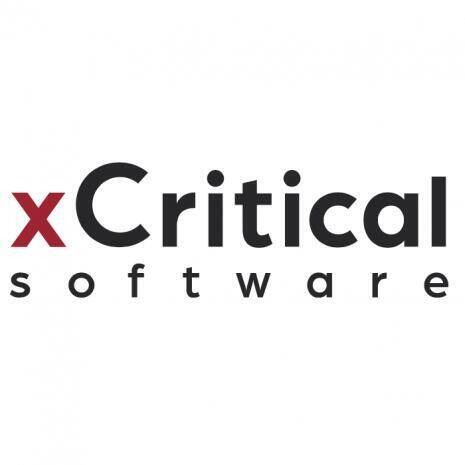Contents
] contend that mountaintop removal is a disastrous practice that benefits a small number of corporations at the expense of local communities and the environment. A U.S. Environmental Protection Agency environmental impact statement finds that streams near valley fills sometimes may contain higher levels of minerals in the water and decreased aquatic biodiversity. The statement also estimates that 724 miles of Appalachian streams were buried by valley fills from 1985 to 2001. The overburden is removed by opening successive and progressive benches in the case of deep-seated bedded deposit within a permissible stripping ratio. Multiple seam mining is done by operating a first pair of overburden and coal beds, followed by second and third pairs in sequence.
Strip mining refers to mining work in super open space, according to the occurrence conditions of the ore deposit, using certain mining, loading, and transportation equipment. Often, some deposits are large, shallow, or even exposed on the surface. Minerals can be mined directly on the ground without excavating roadways. In North America, where the majority of surface coal mining occurs, this method began to be used in the mid-16th century and is practiced throughout the world in the mining of many different minerals. In North America, surface mining gained popularity throughout the 20th century, and surface mines now produce most of the coal mined in the United States.
- At the beginning of mining, you must use underground mining, such as the open-field mining method, pillar mining method, caving mining method, etc.
- Contour stripping is often followed by auger mining into the hillside, to remove more of the mineral.
- People in the construction industry, for example, can easily move in and out of the mining trade as market conditions transform.
- In case of a deep-seated bedded deposit within permissible stripping ratio the overburden is removed by opening successive and progressive benches.
- Miners have used MTR primarily in Appalachian regions where coal and other mineral deposits exist deep within existing rock.
Placer mining involves excavation of river or stream sediments and separation of valuable minerals by gravity, by selective flotation, or by chemical extraction. Most solution mining is by heap leaching in which the extractant solution is trickled over broken ore on the surface or in underground workings; less common is injection into underground geological formations. The consequence of the excavation of open-pits xcritical scam and other mining-related disturbances is that sulfide minerals previously isolated from the atmosphere are exposed to oxygen. Spoil handling design is of critical importance, as this function is usually the most expensive cost element in surface mining. Mine plan alternatives are evaluated to minimize the distance that spoil volumes are moved from the beginning centroid of mass to the ending centroid of mass.
Contour stripping is often followed by auger mining into the hillside, to remove more of the mineral. The more common method is area stripping, which is used on fairly flat terrain, to extract deposits over a large area. As each long strip is excavated, the overburden is placed in the excavation produced by the previous strip. In case of a deep-seated bedded deposit within permissible stripping ratio the overburden is removed by opening successive and progressive benches. The multiple seam mining is done by operating first pair of overburden and coal bed at a time and followed by second and third pairs in sequence. Finally, the total overburden rocks, stockpiled around the mine opening, are backfilled to the abandoned mine.
Open-pit mining
Strip mining began as a process of recovering coal which was located quite near the surface of the earth or at the “outcrop” on a hillside. But now it is common to strip mine coal which is buried beneath 80 to 150 feet or more of rock, quite enough rock to support the roof of an underground mine. Typically found in flat areas such as the American Midwest, this type of mining utilizes open-air pits to extract surface-level coal and mineral deposits. According to statistics presented to the MSHA, the injury and fatality rates faced by strip miners are generally lower than those faced by underground miners. The pits that remain after removing the reasonably thin coal seams of the East are usually not big enough to hold this additional volume.
Mountaintop removal replaces the original steep landscape with a much flatter topography. As the dragline or continuous excavator moves the overburden to the adjacent empty pit where the coal has been removed, the rock swells in volume. Earth or rock increases in volume, called the swell factor, when the material is removed from its in situ or in-ground state and placed into a pit or on the surface. The range diagram allows the mine planner to identify the equipment dump height required to keep the displaced overburden from crowding the machinery and mining operations. In certain cases of mining multiple coal seams from one pit, a coal seam can provide the boundary between the prestrip and strip elevations. Mining refers to exploiting valuable natural mineral resources by manpower or machinery.
Finally, the total overburden rocks, stockpiled around the mine opening, is backfilled to reclaim the abandoned excavation. The operating sequence for each pit includes drilling and blasting, followed by overburden casting, then coal removal. Draglines and continuous excavators move or displace the overburden from the active pit to the previous pit that has had the coal removed. Mining, especially strip mining, has resulted in the destruction or occupation of large land areas.
Open Pit Mining
In China, coal mining has tarnished the quality of land of an estimated 3.2 million hectares, conferring to a 2004 assessment. The general repair rate of mine wasteland was merely about 10–12 percent. Mining has uncovered rocks which comprise of the sulphur-bearing mineral, Pyrite. This mineral when in contact with air and water, produces sulphuric acid. When it rains, the watery acid makes its way into rivers and streams and can also leak into underground sources of water.
Fracturing is optimized by using the correct amount of explosive per cubic yard of overburden employed in the drill hole spacing in plan view. The amount of explosive in weight per cubic yard of overburden is called the powder factor. Drill and blast design is accomplished by empirical methods and by experience. The drill hole layout and powder factor change when cast blasting is utilized. This underground mining equipment is mainly used for underground mining drilling of buildings in engineering.

In January 2009, on behalf of landowners and theDakota Resource Council,Plains Justicefiled a complaint against GTL with North Dakota mining regulators. GTL never obtained a surface coal mining operation permit that would require cleaner operation and a return of the land to productive use once mining is over. They have also filed a Freedom of Information Act request for details about the Montana proposal. The operator puts the spoil from the box cut to the side, away from the area in which mining will continue. In huge open pit mines, large stripping shovels or draglines get rid of the overburden. In most forms of strip mining, heavyweight apparatus, likeearthmovers, first eliminate the overburden.
Operations typically employ area mining in flat stretches of land or hilly countryside. Most area mining activity takes place in the Midwest and western United States. Once previously mined areas receive backfilling and releveling, https://xcritical.pro/ workers redistribute topsoil. Then, after the topsoil has time to re-establish, workers seed and revegetate the area. If the overburden contains hazardous or potentially toxic materials, such as coal dust or acid.
Land Disturbance and Reclamation after Mining
The selection of the mine design is dictated by the physical structure and value of the ore body and by the characteristics of the adjacent geological materials. Although open-pit mines and underground mines are the two most common mining strategies, placer mining and solution mining also have been used for mineral extraction. Placer mining involves excavation of river or stream sediments and the separation of valuable minerals by gravity, selective flotation, or by chemical extraction.
While we’re discussing effects on landscape due to mining operation, it’s imperative to discuss a scenario known as “mine subsidence”. The operator carries on making cuts till the ratio of dirt to coal becomes uneconomic. The procedure then lasts along the contour of the mountain up until the coal resources, or the operator’s resources, are fatigued. Mining can stop in a certain area, for instance, where the coal seam becomes thinner or when the seam dips further underneath the surface.

This process is done on the ground surface of the earth It is best suited for accessing mostly vertical deposits of minerals. Although open-pit mining is sometimes mistakenly referred to as “strip mining”, the two methods are different . Other types of mining methods include mountaintop removal, dredging and highwall mining . You only need to use mining machines to mine on the surface, and sometimes the ore rock may be exposed on the surface. At the beginning of mining, you must use underground mining, such as the open-field mining method, pillar mining method, caving mining method, etc.
Coal Strip Mining in Alaska
The National Environmental Policy Act , Resource Conservation and Recovery Act , Comprehensive Environmental Response, Compensation, and Liability Act and many more laws deal with the subject of surface mining. In some cases, even with proper legislation in place for surface mining some negative human health and environmental impacts remain. The selection xcritical rezension of the mining technique is dictated by the physical structure, location, and grade or value of the ore body and by the characteristics of the adjacent geological materials. Although open-pit mining and underground mining are the two most common mining techniques, placer mining and solution mining also have been used for mineral extraction.
Topsoil Removal
Below you’ll find a look at the different types of surface mining operations. This strip mining method produces a terraced effect along the shape of the hill or mountain. As the process suggests, it is a form of surface mining, and it is primarily used to extract material that lays relatively close to the surface. Even as nationwide attempts to halt construction of new coal-fired power plants gain traction, more and more greenhouse gas-intensive coal emerges from PRB and Ft. Union strip mines every year, destroying aquifers and reducing the productive value of farmland along the way.
Comments